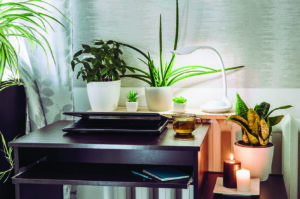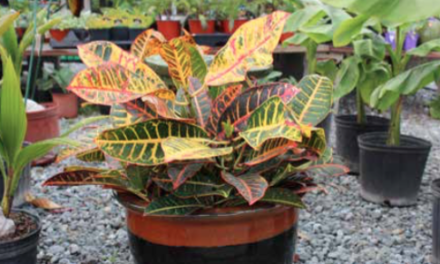With 2021 well under way, the new year for gardeners is right around the corner.
Each year, Garden Media Group issues a trends report, discussing what’s popular and emerging on the gardening scene.
“This year, we had to scrap many trends we had identified and examine shifts in behavior during the quarantine. Then we set out predicting how these shifts would shape the future of gardening,” said Katie Dubow, president of Garden Media Group. “How the world will change post-COVID-19 remains to be seen, but one thing is certain: We are in the middle of A Great Reset.”

According to a report by the Garden Media Group, there will be even greater demand for houseplants and home office plants in 2021.
With the pandemic changing so much of our daily life, from how we work, recreate and eat, gardens and plants overall provided a point of solace for may and the report sees that continuing.
“What’s more, gardens are tools for building more resilient and connected communities and neighborhoods,” Dubow added. “We’re seeing neighbors getting to know each other and helping each other and being available. And a good healthy, garden is full of diversity.”
Broken up into multiple chapters, the report says garden centers and businesses have entered the “Improv Era,” shifting quickly for meeting safety guidelines.
For gardeners, that has meant more opportunities for online shopping, delivery and customized service and the report expects that to continue to evolve to new social norms.
As quarantine orders set in last year, urban dwellers longed to escape the confines of their homes and apartments for less populated spaces.
On the Mid-Shore, that meant a flood of interest in real estate, and homes and property on the market was gobbled up quickly.
The report sees teleworking continuing widely for the long term which will stimulate interest in moving to more open areas. Without a commute to the office, people will still have the added time they found themselves last spring and that could translate into visiting a park or caring for more plants in their house.
“There will be even greater demand for houseplants — and home office plants, whether people are setting the stage for virtual meeting backdrops or just wanting to improve concentration,” according to the report.
Dedicated “garden rooms” may pop up in homes as well, the report added, as people combine the beauty of nature with the comfort of home.
With more time at home last year, people rediscovered their backyards, creating new spaces to explore.
Research shows an estimated 16 million people started their first garden last year.
On April 5, the phrase “victory garden” reached Google’s all-time peak popularity as a search term.
“With the surge in home cooking and the fear of food scarcity, many Americans are discovering the joy of growing their own food,” the report said.
To keep those newbies growing again, the report said garden centers are keen to bundle products into kits and offer education where it can.
Gardens for food were the most popular, and within that set, berries saw a huge boost in popularity.
For non-edibles, the report said bulbs and common cut flower varieties are trending.
More garden space also means less grass to mow.
According to a recent National Garden Bureau survey, 67 percent of respondents 35 years old and younger shared that, while they want some green lawn, they also desire the rest of their yard planted with a wide variety of other plants.
For those still constrained on space, so-called mini-plants are a major trend the report sees.
Whether it’s mini bell peppers, dwarf yellow squash, miniature watermelon or any of the other many fast-growing varieties on the market, growing small has big appeal.
“Cuteness aside, tiny plants are the perfect choice for plant keepers with limited space and time,” said gardening consultant, Leslie Halleck. “Tiny plants — grown on your windowsill, under grow lights, or under glass — can feed your plant addiction without cramping your style.”
Plantings that embrace nature rather than establish a barrier between it are popular as ecological design factors take a priority, the report said.
According to landscape architect and author, Claudia West, nature doesn’t live “out there” anymore, because “out there” is gone.
“Nature lives in our backyards, in our developments and parking lots or rooftop gardens — or it doesn’t live,” she said in the report. “That’s the reality.”
For the full 2021 Garden Trends Report, visit gardenmediagroup.com.




